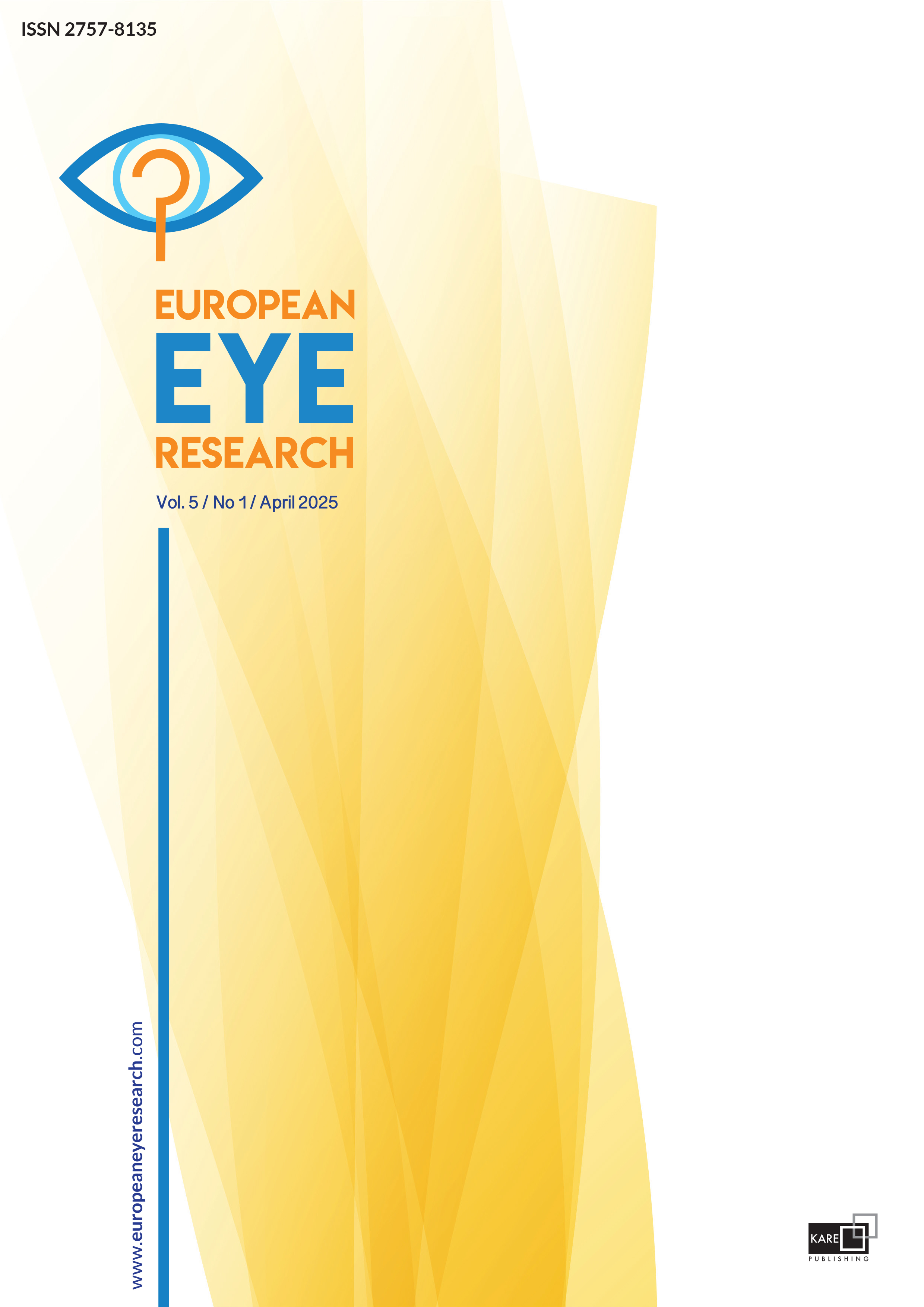

Evaluation of dry eye in eyes with unilateral pterygium
Pelin Kiyat, Omer KartiDepartment of Ophthalmology, Izmir Democracy University, Buca Seyfi Demirsoy Training and Research Hospital, Izmir, TürkiyePURPOSE: The purpose of this study was to determine if eyes with unilateral pterygium are more likely to suffer from dry eye symptoms and more prone to have abnormalities in dry eye parameters than healthy eyes.
METHODS: Forty eyes of 20 patients were enrolled. The eyes that were diagnosed as having pterygium were considered as Group 1 and other healthy eyes of the same patients were defined as Group 2. The existence of dry eye was tested with tear film break-up time, Schirmer-1 test, Oxford scale, and Ocular Surface Disease Index (OSDI) score assessments.
RESULTS: Median tear film break-up-time measurement and Schirmer 1 value were lower in Group 1; however, no statistically significant difference was detected (p=0.06 and p=0.308, respectively). Median OSDI score and median Oxford scale score were higher in Group 1; however, no statistically significant difference was detected (p=0.05 and p=0.250, respectively).
CONCLUSION: Between eyes with pterygium and healthy ones, there was difference in dry eye test results. These results may show that there might be a relationship between pterygium and dry eye disease regardless of the genetic background and environmental factors.
Manuscript Language: English



